Summary of Toyota Operations Management
- Toyota has established and maintained its strong brand in the competitive automobile industry through a rich history of investment in its supply chain management systems (Russ, 1996).
- The automobile industry has been characterized by trends and innovations with increased need for interacting with customers to know their needs and meet their requirements, technology advances and other governmental requirements (Songini & Copeland, 2000).
- The industry has been faced with high demand for new cars and other attributes such as improvements in vehicle performance, safety and a reduction in the environmental impact of the vehicles with the need to keep up to date with market trends and technological advancements (Veloso & Kumar, 2002).
- Despite the issues of the supply chain management system for Toyota due to recent quality crisis of its parts, the value derived from the supply chain system is numerous.
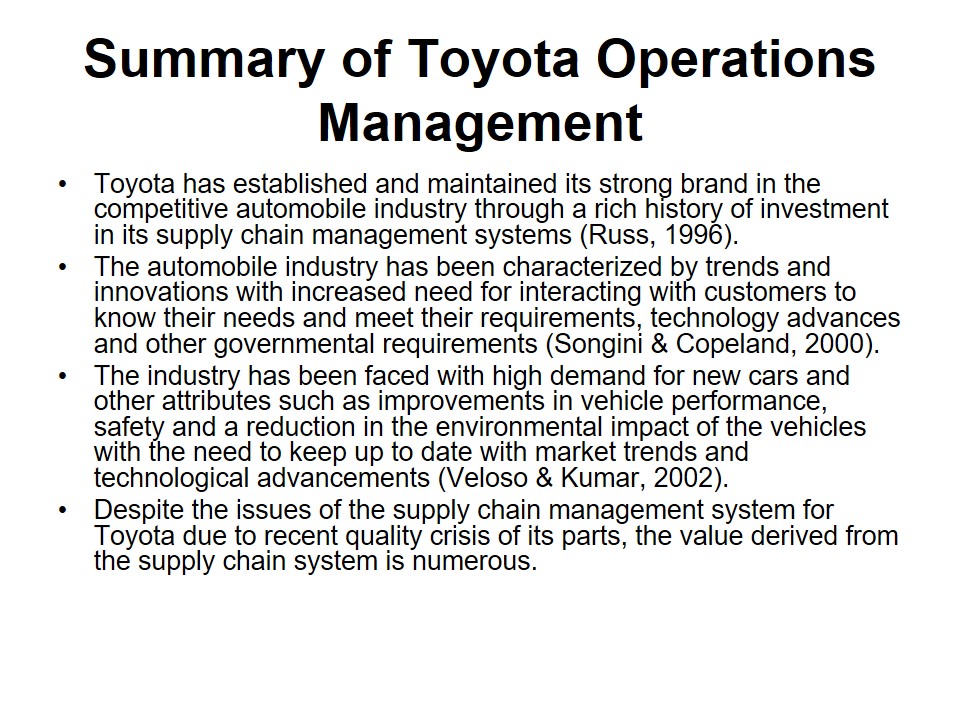
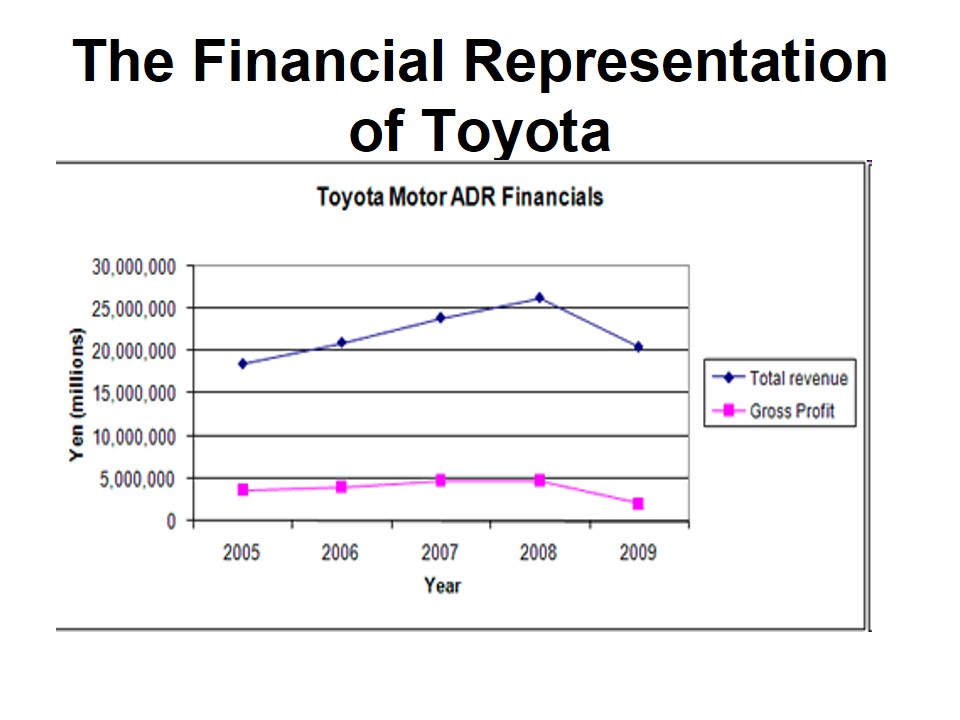
Trends in Supply Chain Management
Toyota has the mission of adding value to customers and society hence embarked on ensuring high quality products and low costs for its supply chain systems (Kishore & Nissen, 2006).
The trends of increased web use for connecting with dealers and use of communication networks to offer speedy communications between Toyota and the dealers, distributors and suppliers has increased the visibility of Toyota (Songini & Copeland, 2000).
The trend of increased innovations for the manufacturing sector of Toyota encouraged its increased market share to 15% from 12% with more emphasis on technological trends (Kishore & Nissen, 2006).
The technology trends have been efficiently used in the adoption of timely deliveries, supplier inventory management and electronic data interchange (Kishore & Nissen, 2006).
Toyota has experienced and taken advantage of industry trends in aspects such as safety concerns and reducing the environmental impact of its vehicles (Songini & Copeland, 2000).
The current issue of quality crisis of the parts of Toyota has necessitated the company to use several suppliers and increase vetting techniques applied on them.
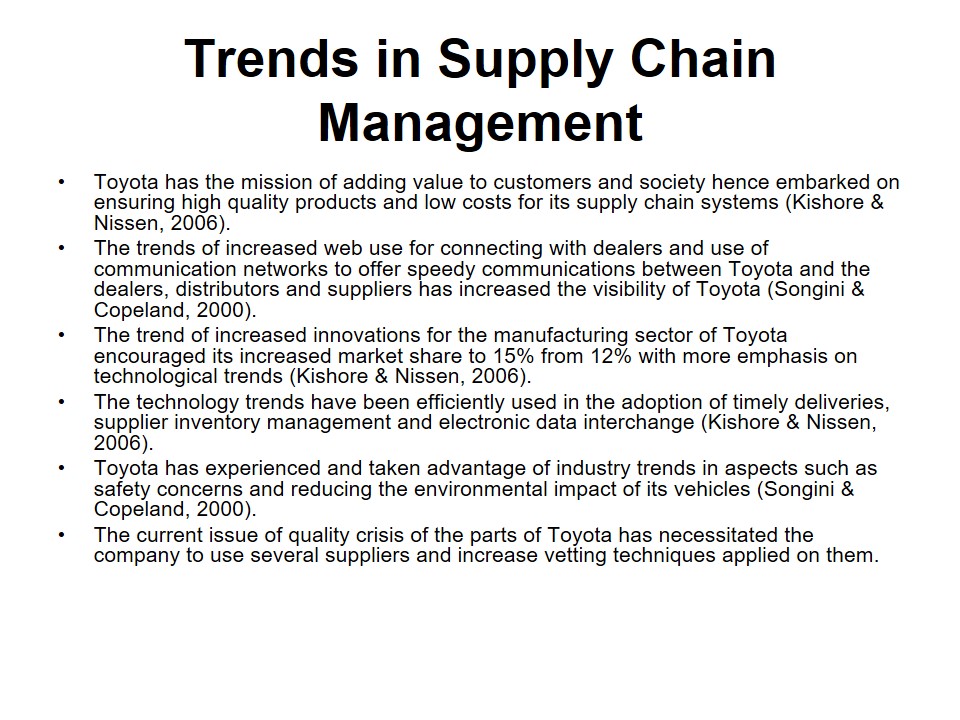
Technological Advances
Technology has advanced in the automobile industry with aspects of environmental concerns, safety performance and design matters that have been incorporated by Toyota to meet customers’ requirements and maintain a competitive advantage (Songini & Copeland, 2000).
Technology advances have increased communication and interactions in the supply chain of Toyota through the use of web and technologically advanced communication networks (Songini & Copeland, 2000).
The use of technology agents through performative, advisory and information retrieval agents has necessitated the incorporation of timely deliveries, supplier inventory management and electronic interchange for computer based support of the supply chain (Kishore & Nissen, 2006).
Technology advances have allowed Toyota to pursue an online replacement and market exchange that has made maintenance, operations and repair efficient (Songini & Copeland, 2000).
Technological advancements in electronics have allowed the inclusion of electronic systems, actuators and sensors in the operations management to increase vehicle performance (Kishore & Nissen, 2006).
Technology has also enhanced the development of e-marketing for Toyota’s products and lowered costs of production and marketing. Kouvelis, Chambers and Wang (2006) argue that “increasing the flexibility of production capacity can provide an effective response to uncertain demand and reduce the cost induced by that uncertainty” (p. 451).
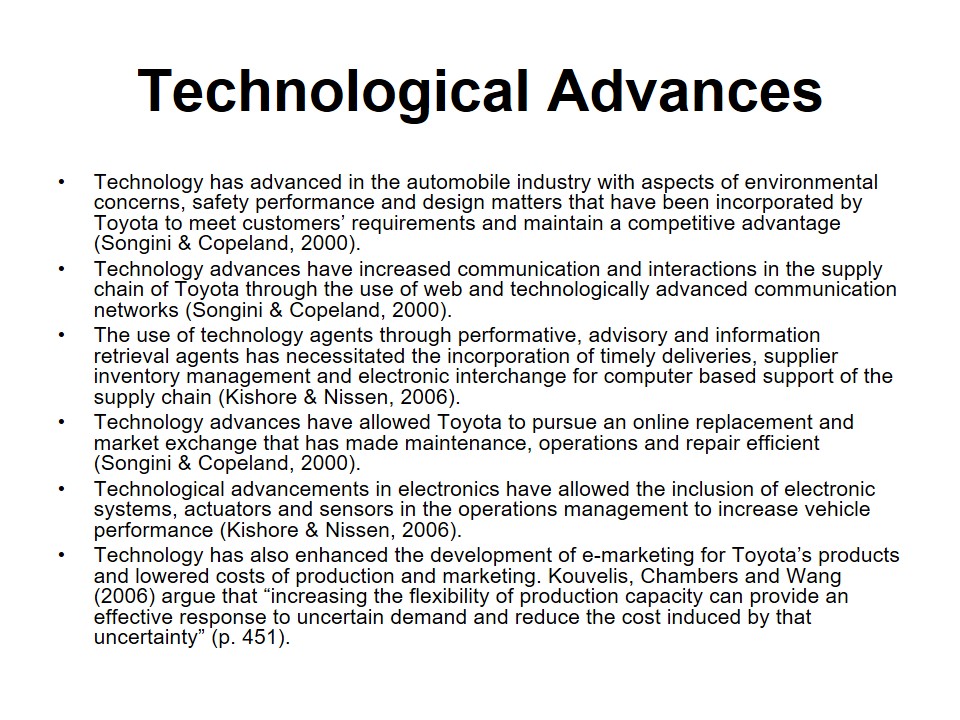
Best Practices for Toyota
The importance of creating effective control systems in the supply chain management system is evident by the quality crisis of its dealer parts (Veloso & Kumar, 2002).
The aspect of making use of technology agents such as performative, advisory and information retrieval agents would be effective in helping Toyota avoid the ambiguity characterized with supply chain management (Kishore & Nissen, 2006).
The aspect of diversification, effective vetting and emphasis on experience for suppliers would be efficient for operations management for Toyota.
There is need to embark on increased technological applications in the supply chain for monitoring and lowering the risks involved (Veloso & Kumar, 2002).

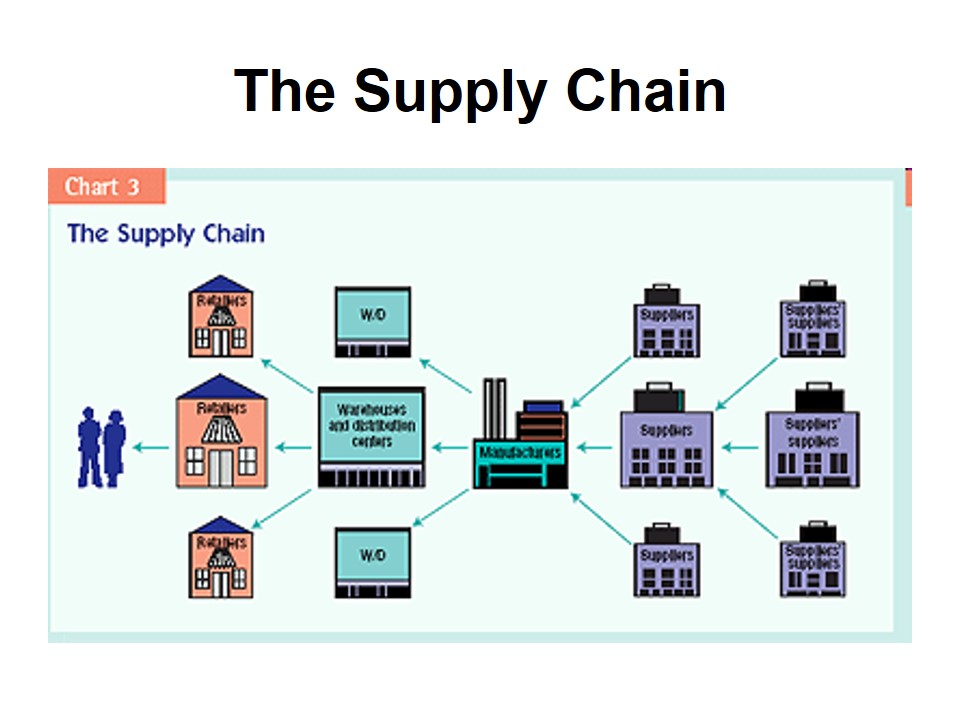
Summary
- The automobile is a competitive industry.
- Players in the industry like Toyota need to implement effective supply chain management systems to ensure quality products and services.
- The use of advanced technology in supply chain management has enhanced the efficiency of Toyota and increased its production capacity.
- Indeed, effective and efficient supply chain management is crucial in minimizing risks faced by the company and assisting in its overall operation management.
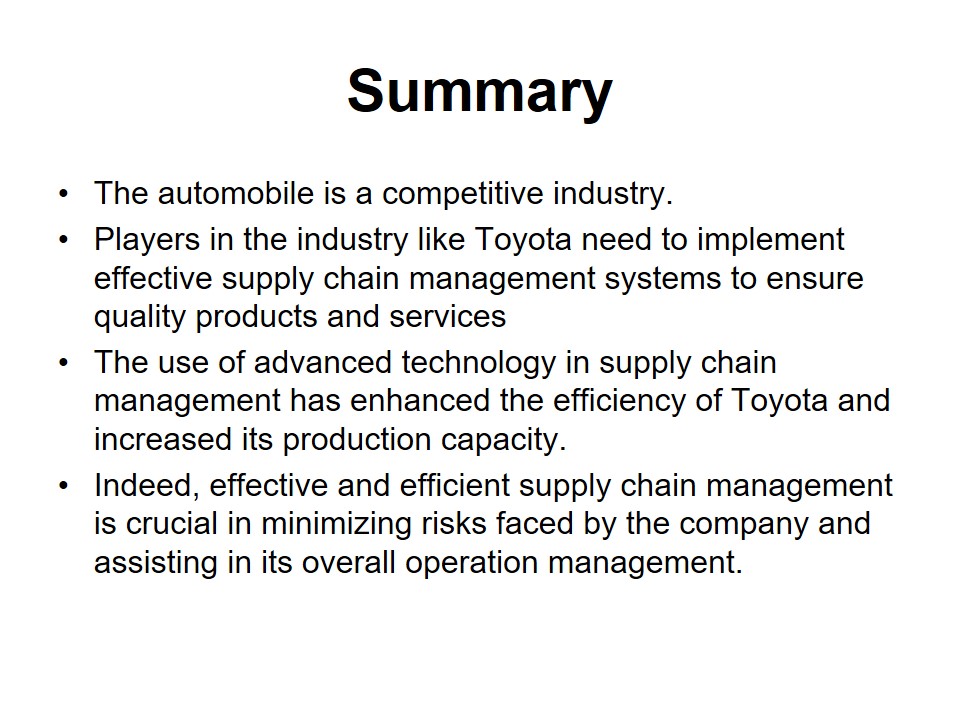
Reference List
- Kishore, S., & Nissen, M. (2006). Incorporating Software Agents into Supply Chains: Experimental Investigation with a Procurement Task. MIS Quarterly, 30(1), 145-166.
- Kouvelis, P., Chambers, C., & Wang, H. (2006). Supply chain management research and production and operations management: review, trends, and opportunities. Production and Operations Management, 15(3), 449-469.
- Russ, J. (1996). Made in the U.S.A: Honda and Toyota as transplant automobile manufacturers in the United States. Ann Arbor, MI: Bell & Howell Information Company.
- Songini, M., & Copeland, L. (2000). Toyota web-enables dealers, supply chain. Computerworld, 34(42), 7.
- Veloso, F., & Kumar, R. (2002). The Automotive Supply Chain: Global Trends and Asian Perspectives (ERD Working Paper no 3). Manila: Asian Development Bank.